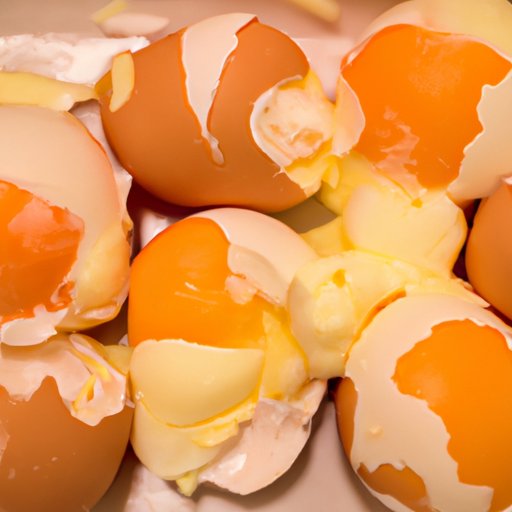I. Introduction
Perhaps you’ve heard someone say that an egg is bad when it produces a nasty smell when cracked. Unfortunately, that’s not always a reliable indicator of freshness. Additionally, keeping expired eggs in your kitchen can be dangerous. Foodborne illnesses caused by consuming bad eggs can lead to serious health problems. So, how do you know whether an egg is bad? In this article, we will discuss reliable methods to assess egg freshness.
II. Look at Expiration Date
One way to know if an egg has expired is by looking at its expiration date. All egg cartons carry labels with a “best before” date, which indicates the egg’s freshness. If an egg is still within its best-before date, it is generally safe to consume.
However, it is best to discard eggs that are past their expiration date regardless of their appearance or smell. Consuming expired eggs can cause foodborne illnesses that could be life-threatening. Even if you’re not sure about the freshness of an egg, it’s better to be safe than sorry.
III. The Water Test
The Water Test is an effortless way to determine if an egg is fresh or not. Fill a cup with water and add an egg carefully. If the egg sinks to the bottom and rests horizontally, then it is fresh. If the egg stands upright at the bottom of the glass, it means it’s a little old but still safe to eat. However, if the egg comes to the surface and floats, it is no longer good to consume and should be discarded.
IV. Check for Cracks
Cracked eggs should be discarded, even if they appear to be fresh. This is because cracks in the shell can cause major contamination of bacteria that could lead to foodborne illnesses. Always check for cracks before using an egg.
The best way to spot cracks is by looking for fractures with a flashlight while passing it over the egg surface. Cracks are most noticeable at the pointed end, around the air cell. Also, take a feel of the eggshell for any indentations or areas where the shell feels different from the rest of the surface.
V. Smell the Egg
Your nose can be an extraordinary tool in determining the freshness of an egg. Bad eggs produce a sulfuric smell that will make anyone gag. Hence, if you smell any foul odor, discard the egg immediately. Fresh eggs, on the other hand, have an odorless aroma.
VI. Observe its Shell
The texture of the eggshell can also indicate whether an egg is fresh or not. If the shell feels slimy, it means bacteria has already penetrated the protective eggshell coat and started to grow inside the egg. Such eggs should not be used.
Additionally, the shell’s color fades as the egg gets older. A fresh egg will have a bright and smooth surface, while an old egg will have an opaque and rough surface.
VII. Observe its Yolk
The egg yolk can give away information about the egg’s freshness. Fresh egg yolks have a rounded shape, bright orange/yellow color, and are high-domed. If the yolk looks flattened, has a pale color or is watery, that’s a sign the egg is no longer fresh.
Also, the color and texture of the egg whites could indicate freshness. For example, cloudy or thin egg whites are proof that the eggs are no longer fresh.
VIII. Perform a Candle Test
A candle test involves holding an egg up to a light to examine its contents. Fresh eggs have a small air pocket, indicating that they have not been exposed to air for too long. Older eggs have more severe air sacks.
To carry out a Candle test, turn off the lights in the kitchen and hold the egg up to the light, then examine the egg contents. If you see any dark spots or shadows, the egg is not fresh.
IX. Conclusion
Assessing egg freshness is fundamental for maintaining good health. Always check the date label, perform the water, shell, smell, and yolk tests before using your eggs. Remember, consuming bad eggs can lead to foodborne illnesses that are dangerous for your health.
By following these tips, you can be sure to have fresh eggs in your kitchen and avoid any health issues.
